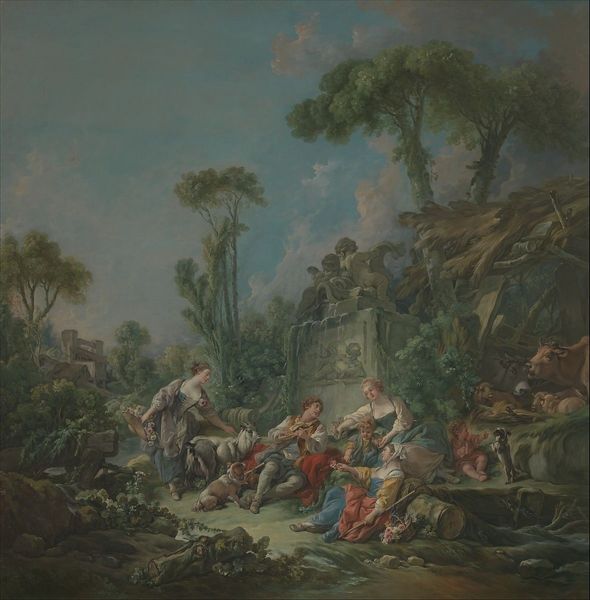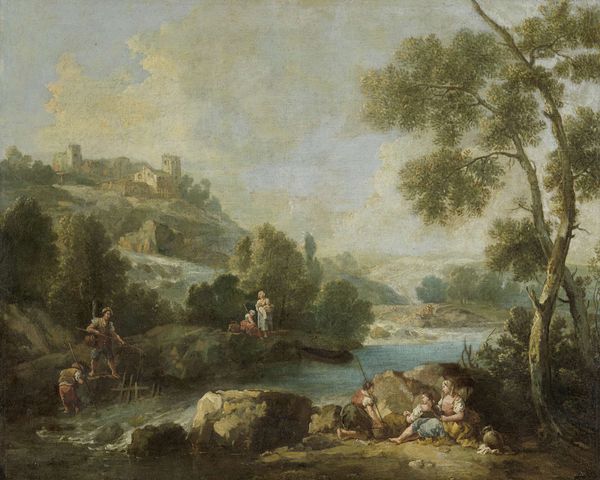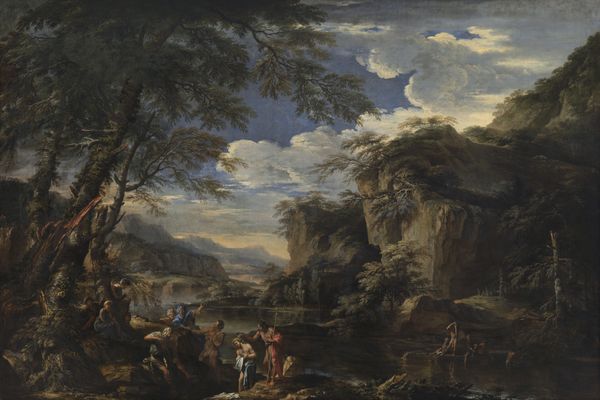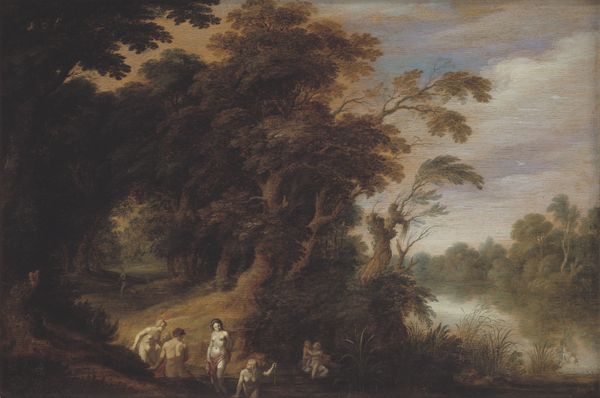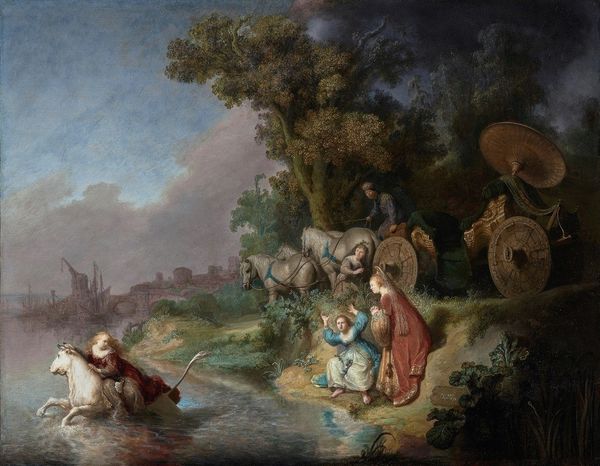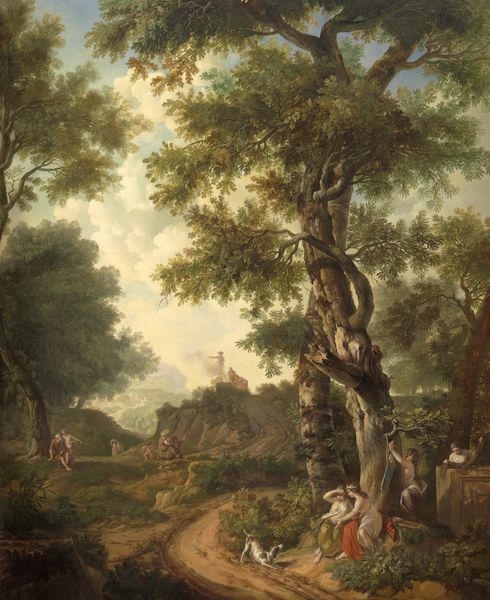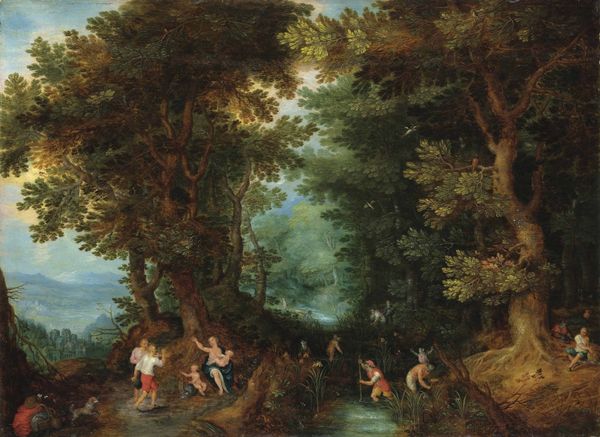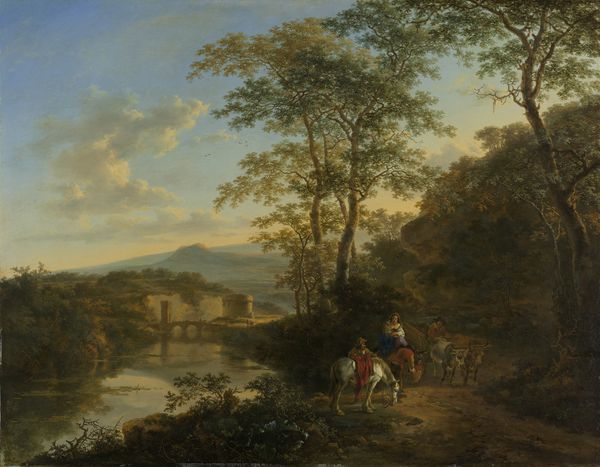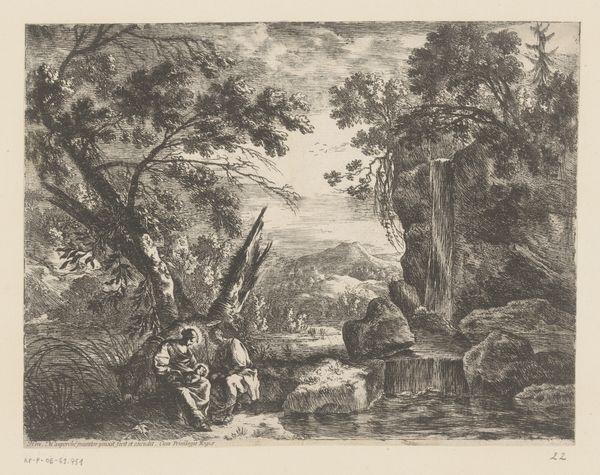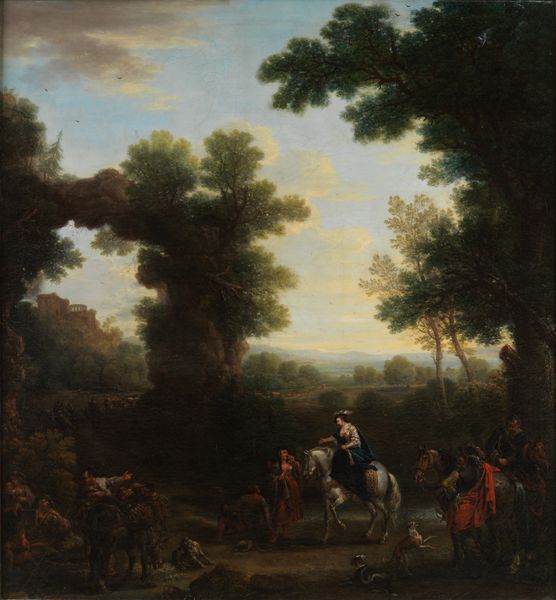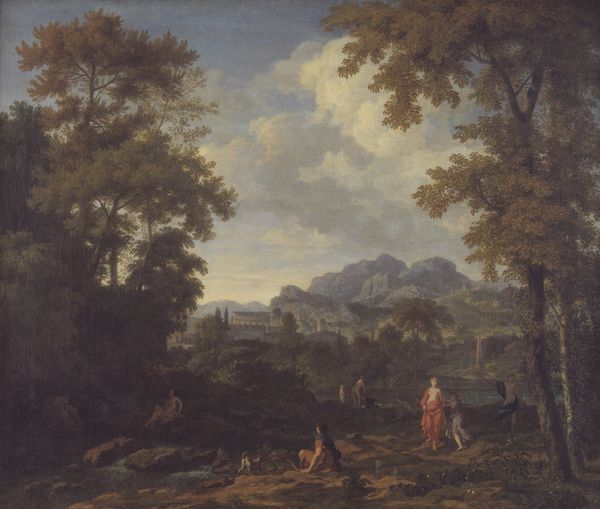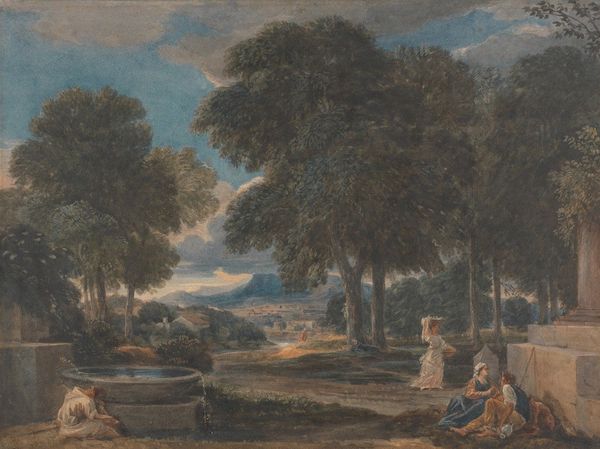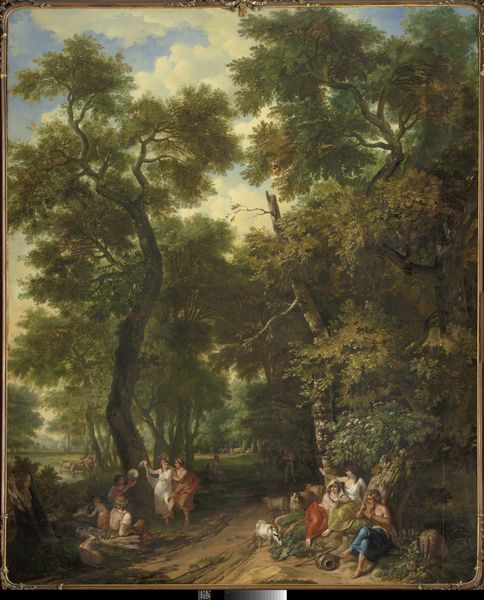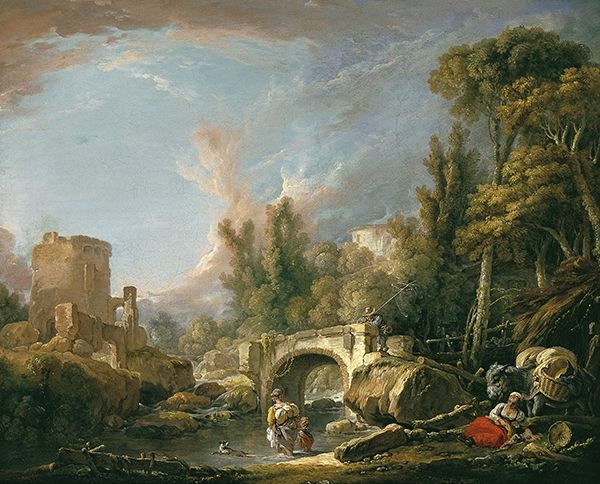
#
fantasy concept art
#
dog
#
possibly oil pastel
#
oil painting
#
child
#
underpainting
#
men
#
painting painterly
#
watercolour bleed
#
watercolour illustration
#
watercolor
#
warm toned green
#
environment sketch
Dimensions: 95 x 93 in. (241.3 x 236.2 cm)
Copyright: Public Domain
Curator: This is François Boucher’s "Washerwomen," created in 1768. Boucher masterfully uses oil on canvas to evoke a very particular mood. Editor: My initial impression is one of carefully staged pastoral fantasy. It feels… curated, almost too idyllic for a depiction of manual labor. Curator: Precisely. The scene presents us with washerwomen beside a stream, framed by classical architecture and lush nature. What strikes me is the conscious invocation of certain compositional archetypes: a group arranged almost as a classical frieze. Editor: It’s true; the figures aren't simply present, they’re posed. The children and even the dog serve to soften what was certainly grueling labor. Look at the colour palette – the delicate blues and pinks seem more at home in a Rococo interior than an outdoor workplace. It glosses over any real sense of the socio-economic reality of washerwomen. Curator: That may be exactly the point. Boucher often used pastoral scenes to explore themes of innocence and sensuality, providing a glimpse into the aristocracy’s desires and fantasies. The soft light and almost dreamlike quality connect it to a long line of art playing with similar themes. Notice, too, the symbols of domesticity which abound. Editor: I can't ignore the way it reinforces class divisions by sentimentalizing the working class, the washerwomen are aestheticized and idealized to soothe any anxieties of the upper classes. Where is the drudgery, the poverty? This seems less about celebrating labour, and more about creating an image that’s easy on the eyes for a wealthy patron. Curator: Perhaps so. But doesn't that curated perfection have its own truth? It is revealing about the period's values and aesthetics. Ultimately the image endures because of how these themes are manifested visually, which remains fascinating. Editor: I agree it holds visual interest but it serves as a potent reminder of art’s ability to obscure realities. Thinking about the agency of those portrayed is where I arrive. Curator: Thank you for joining me in reflecting on this scene of "Washerwomen", it reveals the intricacies between idyllic fantasies and everyday existence in the 18th century. Editor: A useful contrast to remind us that even the prettiest picture might be concealing as much as it reveals!
Comments
No comments
Be the first to comment and join the conversation on the ultimate creative platform.
